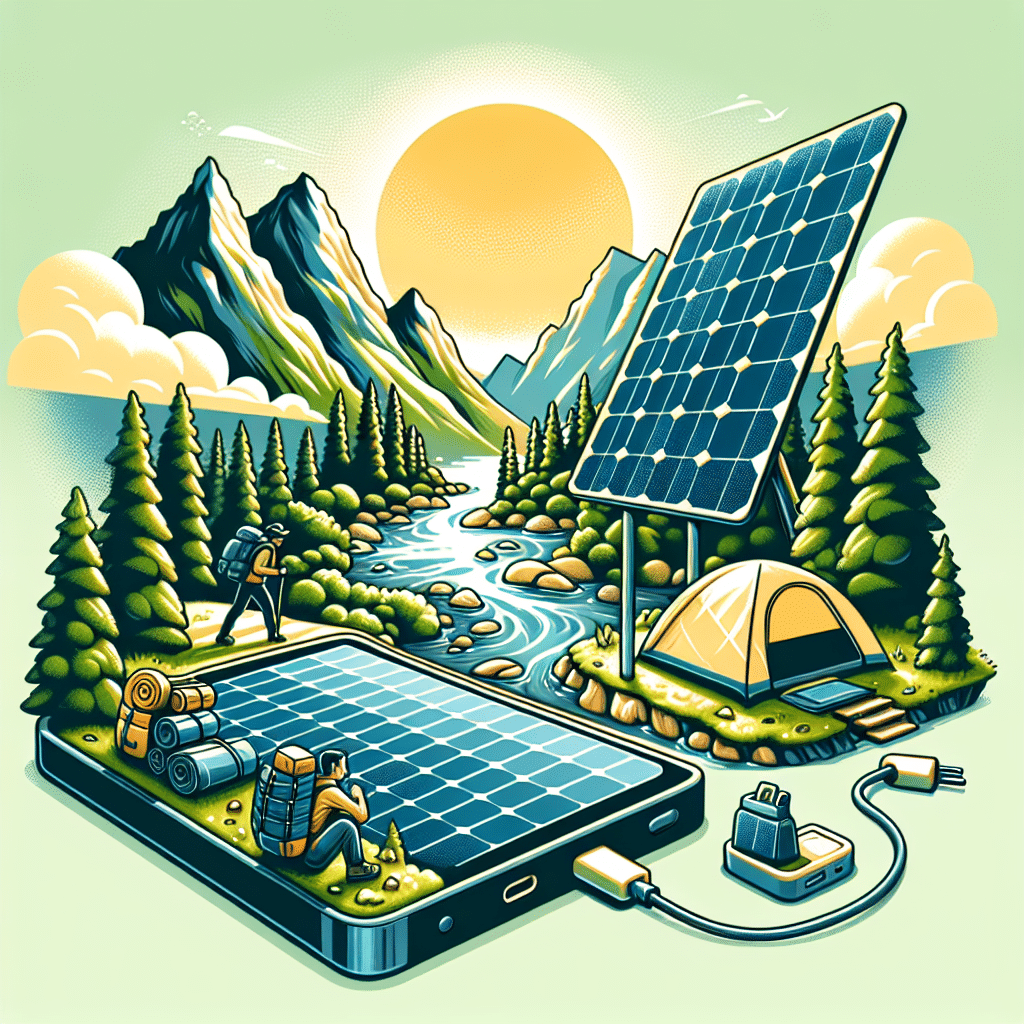Essential Solar Chargers for Hiking Trips
Understanding Solar Chargers
Solar chargers convert sunlight into electricity, making them an ideal power source for hikers who need to keep their devices charged while exploring the great outdoors. The adventure of hiking can be exhilarating, but it’s essential to stay connected for navigation, photography, and emergency communication. This guide delves into the essential features, types, and top solar charger recommendations tailored specifically for hiking trips.
Key Features to Look for in Solar Chargers
-
Portability and Weight: When hiking, every ounce counts. Choose lightweight and compact solar chargers, ideally weighing less than a pound. Look for foldable models that can be easily tucked into a backpack.
-
Power Output: The power output of solar chargers is measured in watts. Chargers with at least 10W are typically effective for small electronics, while 20W or more can efficiently power larger devices like tablets.
-
Durability: Nature can be unpredictable, so look for rugged water-resistant solar chargers that can withstand rough handling, rain, and extreme temperatures. Materials like reinforced plastic and silicone are ideal.
-
Charging Speed: The charge speed is determined by the solar panel efficiency and the output current. Higher efficiency rates lead to faster charging times. Look for chargers that offer multiple output ports to charge several devices simultaneously.
-
Battery Backup: Many solar chargers come with built-in batteries that store energy for later use. This feature is particularly valuable when it’s cloudy or when you need to charge your device after sunset.
-
Compatibility: Ensure the solar charger is compatible with your devices, including smartphones, GPS units, and cameras. Most modern chargers offer USB ports, but verify voltage requirements to avoid damage.
Types of Solar Chargers
-
Solar Power Banks: These devices incorporate both solar panels and rechargeable batteries. They absorb sunlight during the day, storing it for use at night or in low-light situations.
-
Solar Panels: Lightweight and portable, these chargers typically need to be placed in direct sunlight. They are perfect for hikers who stay in one place for a few hours, like during a lunch break.
-
Solar Backpacks: Integrated solar panels into hiking backpacks are perfect for those looking to charge their devices while on the move. These backpacks allow for hands-free power generation.
Top Solar Chargers for Hiking
-
Anker 21W Dual USB Solar Charger
The Anker 21W is a favorite among hikers for its compact design and high efficiency. With dual USB ports, it can charge two devices simultaneously at 2.4A per port. The charger is lightweight at just 12.3 ounces and features a durable, weather-resistant design. -
BigBlue 28W Solar Charger
Ideal for longer treks, the BigBlue 28W has a high power output with three USB ports. Its intelligent charging technology detects the connected device and adjusts output accordingly, maximizing efficiency. The rugged build and built-in ammeter for monitoring power flow make it a reliable choice. -
RAVPower 24W Solar Charger
This solar charger comes with a smart IC chip that intelligently detects your device’s needs. The dual USB ports can effectively power two devices at the same time while ensuring quick charge speeds. Weighing only 1.1 pounds, it’s designed to be lightweight and easy to carry. -
Nekteck 21W Solar Charger
Sporting a sleek design and heavy-duty construction, the Nekteck solar charger features high conversion efficiency. With dual USB ports and automatic distribution of current, it charges devices fast. Additionally, it includes a built-in battery bank for emergency charging. -
Goal Zero Nomad 20 Solar Panel
With a robust design, the Goal Zero Nomad 20 is aimed at serious adventurers. Its foldable design makes it easy to pack, and it has a built-in stand that ensures optimal sunlight exposure. The 20W output is perfect for laptops and larger devices. -
Suptig Solar Charger 28W
This powerful solar charger combines three solar panels to generate up to 28W. It’s waterproof and designed for rough conditions. With its fast-charging capability and dual USB ports, it’s perfect for charging multiple devices at once. -
X-Dragon 20W Solar Charger
This solar charger excels in efficiency, with its high conversion rate ensuring minimal power loss. It’s equipped with multiple output ports and a unique smart IC technology that helps in optimal charging. The lightweight and portable design enhances its usability for long hikes. -
Renogy 50W Solar Panel Suitcase
For those seeking a more robust solution, the Renogy 50W is a semi-flexible solar panel that is ideal for base camping. It’s portable yet powerful enough to charge larger devices or batteries, making it perfect for group hikes where multiple devices need charging.
Best Practices for Using Solar Chargers
-
Optimal Positioning: For maximum efficiency, position the solar chargers facing direct sunlight. Use adjustable stands or hang them from your backpack while hiking.
-
Clean Panels: Dust and debris can significantly reduce charging efficiency. Clean the panels regularly to ensure optimal performance.
-
Monitor Weather Conditions: Keep an eye on weather conditions. Cloudy days reduce charging ability, so prepare a backup power source if you expect inclement weather.
-
Battery Management: If your solar charger includes a built-in battery, charge it fully before your trip. This way, you have a reliable power source even when the sun isn’t shining.
-
Plan Device Usage: Monitor your device usage throughout the trip, turning off those not required. This conserves battery life, which is crucial when depending on solar power.
Conclusion
Selecting the right solar charger is vital for any aspiring hiker. The perfect combination of portability, durability, and charging efficiency ensures that you can stay connected and powered up throughout your hiking adventures. By evaluating your specific needs and understanding the different types of solar chargers available, you can make an informed decision that enhances your outdoor experience.
